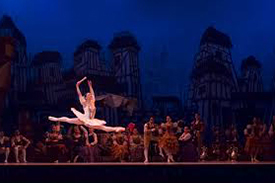 As a professional dancer, it is common for money to come in from various avenues, not just from performing. Many dancers feel it is necessary to supplement their income with teaching or choreographic work, or something aside from the performing arts industry like waitressing or bartending. This work can be hugely flexible so it enables dancers to still perform or audition as much as they would like to.
As a professional dancer, it is common for money to come in from various avenues, not just from performing. Many dancers feel it is necessary to supplement their income with teaching or choreographic work, or something aside from the performing arts industry like waitressing or bartending. This work can be hugely flexible so it enables dancers to still perform or audition as much as they would like to.
Some dancers are lucky and earn good money as a performer, perhaps if they are seen by the right person at the right time. Whilst the opposite end of the spectrum is by no means defining dancers as starving artists, it sees many dancers remaining in the industry because their passion for dance overrides the desire for huge amounts of income. For many dancers, the reward and fame they glean from dance and the performing arts is more important, in those standing ovations and curtain calls
Being financially responsible is especially important whilst dancing on tour, planning ahead and budgeting. Some dancers are responsible for all expenses on tour, including dancewear and shoes, digs and food, whereas as some companies provide this and coordinate everything. Additionally, knowing whether you are being employed as a company dancer or as a freelancer is important, so when it comes to taxes the correct information is used. If you are freelance the company does not extract any taxes from your salary, and it also means you are more likely be in charge of providing more of your own equipment. If you are paid as an employee, your employer will take taxes out of your salary and pay a portion of what you earn the government. In addition to the cost of food and digs, find out if you have any sort of medical insurance or healthcare included in your pay. Dance is so incredibly demanding, so the chance of requiring healthcare or physiotherapy whilst on tour is high.
Ensure you understand how the company is paying you, and then allocate your earnings to cover your expenses, but don’t forget to have some fun along the way!
